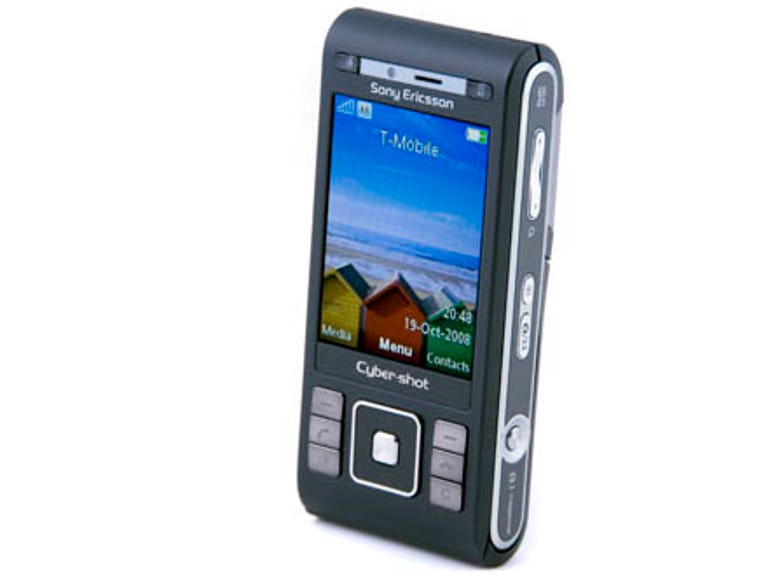 Why You Can Trust CNET
Why You Can Trust CNET Sony Ericsson C905 review: Sony Ericsson C905
Sony Ericsson has always produced good camera phones but the C905 outdoes them all. The high-resolution camera with xenon flash produces sharp shots even in low light and we were impressed by all the extras, such as GPS and Wi-Fi. If you're looking for a serious camera phone that could replace your camera, this is it
Sony Ericsson is renowned for producing some of the best camera phones on the market, so we expected good things from the C905. Pitched as a camera replacement rather than just camera phone, this phone has a lot to live up to. The Sony Ericsson C905 is currently available for free on a monthly contract of around £30 to £35 a month.
The Good
The Bad
The Bottom Line
Design
Some manufacturers want to make their camera phones look more like phones than cameras, but Sony Ericsson has taken the complete opposite route, making the C905 look like a full-on stand-alone snapper.

People will probably scoff that the C905 is too large, as we did at first. But after using it for a while you start to realise that its size makes it easier to use when taking photos -- you can actually hold it properly, just as you would with a regular camera.
It's not Sony Ericsson's slickest looking phone but it is very functional. The keypad is well laid out and easy to use, as are all the other buttons, including for the shutter. There's also a proper lens cover that won't open and close in your pocket, which was a big problem with its predecessor, the K800i.
Features
Camera is king on the C905 and from the moment we picked it up we wanted to take pictures with it. The camera interface is easy to understand and you can adjust several settings, such as the flash, white balance and focus, among others, with just a few clicks.
There aren't as many gimmicks as you'll find on phones like the LG Renoir or Samsung Pixon, but you do get a competent camera experience which is emphasised by the good picture quality, even in low light.
The auto-focus is fast and the xenon flash provides a level of illumination unmatched by LED photo lights. When viewing pics a built-in accelerometer allows you to flip the phone sideways and the photo automatically changes from portrait to landscape.
An additional feature not available on previous Cyber-shot phones is the ability to geo-tag pictures using the built-in GPS. Web services such as Flickr will automatically use the data so that you can plot your pics on a map.
Our only minor issue with the camera is that you have to view a pic in the gallery, instead of in the camera mode, in order to send it via Bluetooth. We also think that it takes quite a while for pics to be saved on to the C905.
Wi-Fi and HSDPA make transferring pictures to the Web or sending them via email fast. You can browse the Web pretty snappily using the C905's browser or by downloading Opera Mini, which we prefer for full-page browsing.
Performance
Audio quality during calls was loud and clear, as was the loudspeaker. Stereo Bluetooth is available if you need to listen to music wirelessly and it works as expected. Unlike certain modern phones that come with tonnes of on-board memory, the C905 only has 160MB on-board, but you can upgrade via a Memory Stick Micro slot that can hold up to 8GB.
Battery life is quoted at 9 hours of talk time using GSM and 380 hours of standby time. On 3G it's 4 hours of talk time and 360 hours on standby. We found it lasted for over a day with moderate use but using of the flash, HSDPA and Wi-Fi drained the battery faster.
Conclusion
The Sony Ericsson C905 is one of the best camera phones we have ever used. Similar to the Nokia N82,
it manages to take high quality photos and offer a plethora of other
features as well. In this case, the camera phone is as good as a
camera, which we find impressive considering most are nowhere close.
One of its best traits, for instance, is its ability to handle low
light so well, which many camera phones don't do. It's not a small
phone but it will deliver, so we highly recommend it.
Update: This review was updated on 20 November with some minor points about the screen, MP3 player and radio. The score didn't change.
Edited by Marian Smith
